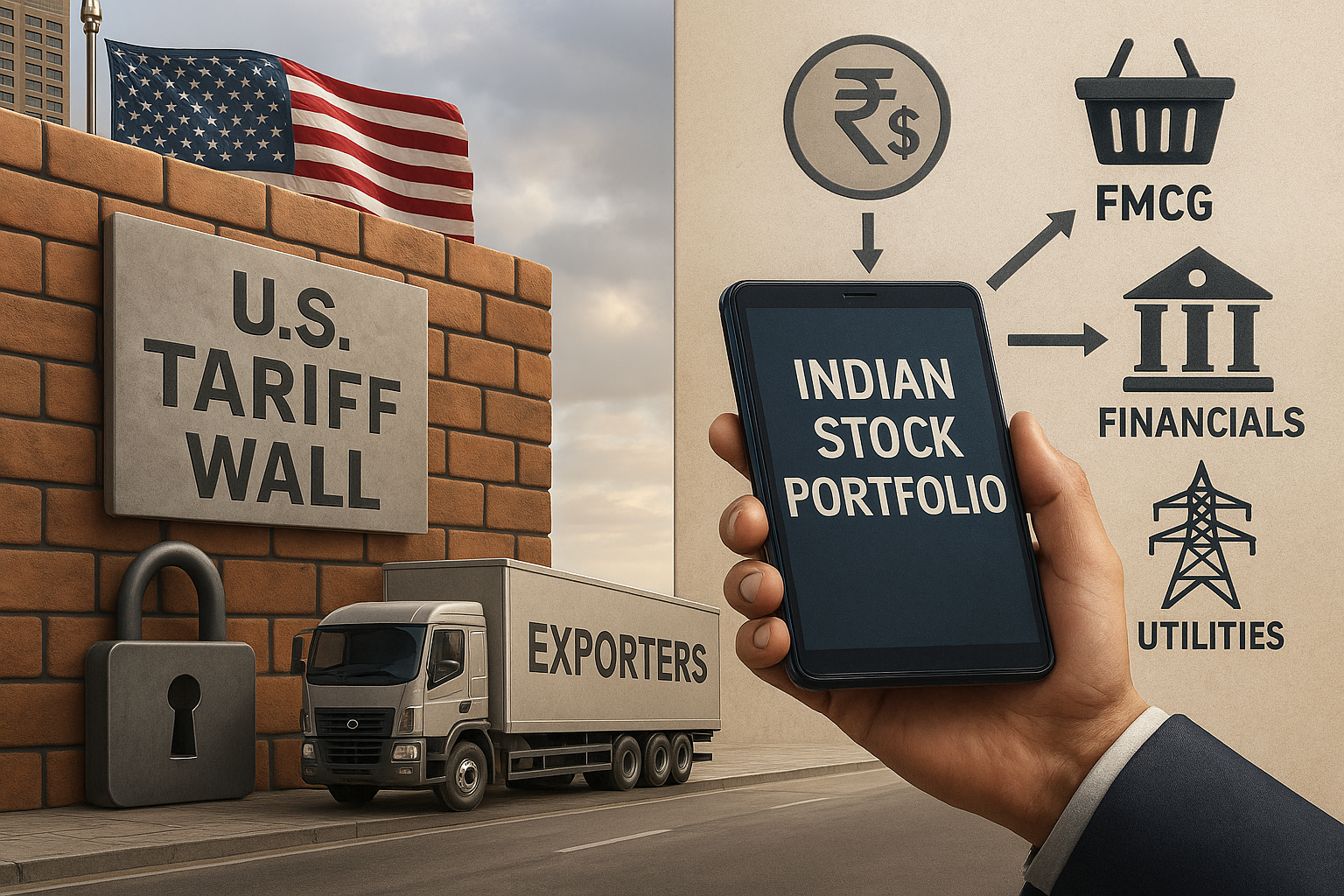Former U.S. President Donald Trump’s threat to impose a 25% tariff on Indian exports is raising alarms across global markets. Experts now recommend Indian investors reassess their portfolio allocations and seek strategic sector tilts to shield against potential volatility in equities, currency, and macroeconomic variables.
Tariff Shockwaves: What Experts Are Saying
Indian firms in textiles, gems & jewelry, pharmaceuticals, and auto components are among the most exposed.
The threat comes at a time when the rupee is already trading near record lows (~₹87.8/USD), raising concerns around widening trade deficit and capital outflows.
While India and the U.S. continue dialogue, uncertainty has created tactical risks for frontline export-driven equities.
Recommended Portfolio Moves for Indian Investors
1. Trim Exposure to Export-Sensitive Stocks
Consider reducing direct exposure to companies that derive a high share of revenue from the U.S., where tariff action could materially impact earnings.
High-risk categories: Apparel exporters, pharmaceutical ingredients, diamond–jewelry players.
Tactical move: Place hedges or reduce near-term exposure while awaiting clarity on tariff implementation.
2. Seek Safe Havens in Domestic Demand Plays
Shift weight toward sectors with strong domestic consumption, less dependent on exports:
Fast-moving consumer goods (FMCG)
Domestic banking and NBFCs
Housing finance and utilities
These segments offer relative insulation from global macro shocks.
3. Dividend Stocks & Defensive Picks
High-quality dividend-paying stocks, especially in core infrastructure, telecom, and FMCG, offer yield and buffer against volatility.
4. Diversified Portfolio Add-ons
Tools and ideas to reduce turbulence:
Exchange-traded funds with broad sector coverage
Small exposure to short-duration government bonds
Cautious allocation to gold or safe-haven instruments
Sector Outlook & Investment Implications
| Sector | Risk/Opportunity | Expert Guidance |
|---|---|---|
| Textiles & Gems | High tariff exposure, earnings at risk | Reduce short-term allocation, hedge risk |
| Auto Components/Pharma | Elevated multinational exports | Monitor guidance and hedge selectively |
| FMCG & Utilities | Resilience amid domestic demand | Ideal defensive core in current cycle |
| Financials & NBFCs | Rate-sensitive, local demand-driven | Maintain or increment weight where quality is strong |
Expert Quotes
“Investors should rotate away from small-mid-cap exporters until trade risk clarity returns—domestic, consumption-led names offer much safer risk-reward in the near term.”
— Senior equity strategist, leading institutional research desk
“Diversification and liquidity matter more now—keep portfolio nimble and allocate toward yield and defensiveness.”
— Macro commentator, Mumbai-based hedge fund
Investor Checklist: Pre-Tariff Risk Scenarios
Review portfolio exposure: Assess how much revenue Indian holdings generate from the U.S.
Set stop-loss and exit points: Particularly for export-driven midcaps sensitive to policy shifts.
Maintain cash reserves: To capitalize on potential dips.
Stay updated: Monitor U.S.-India trade discussions and macro data post-announcement.
Conclusion
Trump’s tariff threat has triggered market jitters in export-driven sectors, but Indian stock market investors can navigate this risk by reallocating toward defensive plays, domestic demand stocks, and yield-driven assets. Strategic hedging, careful sector positioning, and flexible liquidity management offer a resilient path forward during uncertain trade policy cycles.












